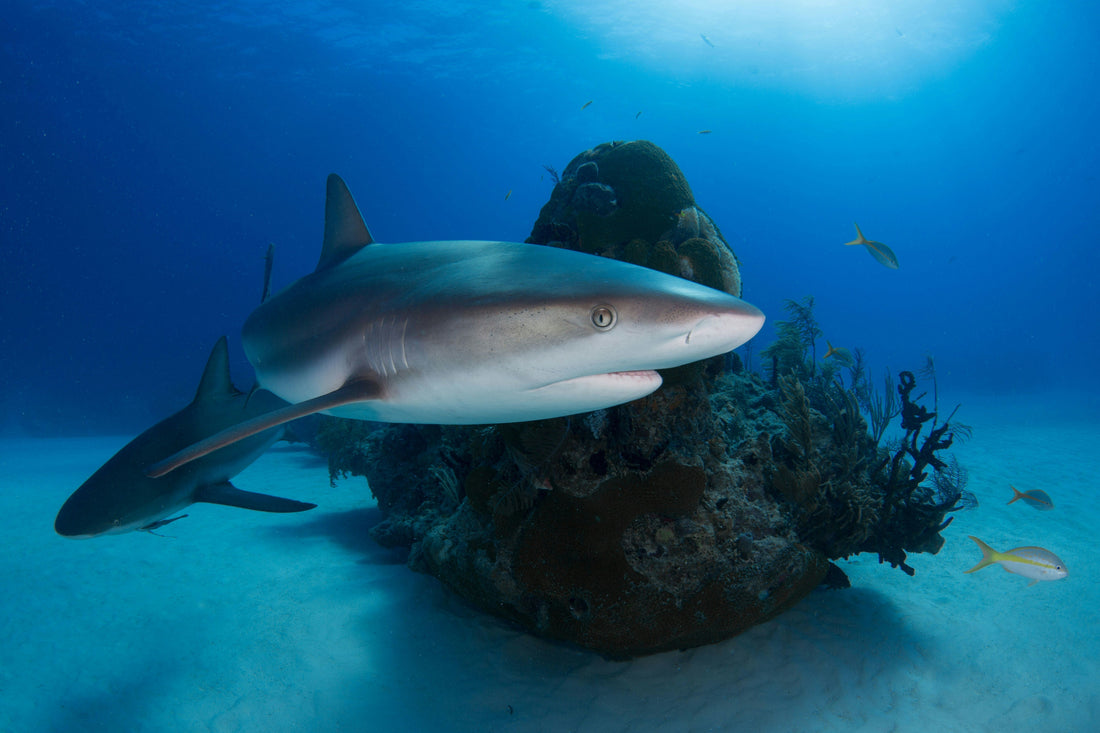Ask any diver what their favorite underwater moment is, and chances are it involves a shark. There’s just something about sharing space with such a powerful creature.
Even when Shark Week is over, it’s always a good time to talk about something many people don’t realize: healthy shark populations are essential for keeping coral reefs thriving. And thriving reefs mean vibrant marine life, epic dive adventures, and oceans worth protecting. So let’s shine a little light on sharks and learn why they’re the true guardians of coral reefs.
Sharks: Guardians of the Reef

Sharks have been cruising the oceans for over 400 million years, and they’re a lot less scary than some people think. Out of more than 500 shark species, only a few are ever linked to attacks on humans, and those encounters are rare.
Reef sharks like blacktips, whitetips, and grey reef sharks are usually shy and keep their distance. But they play a huge role beneath the surface. As top predators, sharks help keep ocean life in balance, making sure coral reefs stay healthy and full of life.
How Sharks Keep Reefs Thriving

Healthy coral reefs depend on sharks more than most folks realize. As top predators, sharks help keep the ocean food web in balance. They control mid-sized predators, which stops those smaller fish from wiping out too many herbivores like parrotfish (the reef grazers that keep algae from smothering corals).
When sharks disappear, the balance breaks down. Research from places like the Great Barrier Reef and Pacific islands shows that reefs with plenty of sharks have more coral cover, more fish diversity, and less algae taking over. Scientists warn that losing sharks can trigger “trophic cascades,” where entire reef ecosystems start to fall apart. Fewer sharks mean fewer healthy reefs and fewer unforgettable dives.
What This Means for Divers

For divers, healthy shark populations translate directly into epic underwater experiences. The same reefs where you spot sharks often teem with fish, turtles, and dazzling corals. Places like Palau, Fiji, Cocos Island, and the Bahamas attract divers because thriving shark populations signal thriving reefs.
Beyond adventure, shark tourism supports conservation. The Global FinPrint Project reports that areas protecting sharks often see increased tourism revenue, which incentivizes local communities to safeguard these animals instead of harvesting them.
Threats Facing Sharks (and Reefs)

Unfortunately, sharks are under siege. Overfishing, driven largely by the demand for shark fins and meat, kills an estimated 100 million sharks annually. Many are also caught and killed unintentionally as bycatch in other fisheries. Meanwhile, climate change is putting even more pressure on coral reefs and the delicate balance of marine ecosystems.
On top of all that, sharks get a bad rap. Their tough reputation often leads to fear, harmful policies, and even shark culls that ignore how important they are to ocean health. When we lose sharks, we lose balance in the ocean, and the vibrant reefs and sea life that make diving so magical.
How We Can Help Sharks and Reefs

The good news is, we can all help keep sharks—and reefs—safe for the future. Support organizations working to protect oceans and marine life. Make ocean-friendly choices, like eating sustainable seafood. Choose dive shops and tour operators who care about conservation. And keep spreading the word about why sharks matter, long after Shark Week ends. Every action counts for keeping our oceans healthy and full of life.

Shark sightings can happen when you least expect them. Head into your next ocean adventure with gear that’s ready for anything. Browse Grateful Diver UV shirts, neck gaiters, or hats for protection from the elements. A portion of every purchase benefits Reef Relief, which helps maintain healthy and sustainable habitats for marine life.

